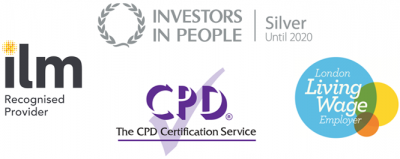Oct
06
2016
Developing a connection: building rapport in the workplace
It is relatively easy to establish rapport with someone who is like you, but to build rapport with someone who has a different personality to yourself can be much more difficult. Learn how to connect with members of your team and enhance your communication and leadership skills with the following techniques from Advanced communication trainer Jakki Bendell.
“Rapport is the ability to connect with others in a way that creates trust and understanding between people. It is also the ability to appreciate another’s point of view (not always to agree with it), be on the same wavelength, and to understand and accept another’s feelings.”
– Sue Knight, NLP at Work
Establishing rapport
You will find that building rapport with someone who is not like you requires a lot more effort than someone who is. However, you build rapport by communicating that you respect the beliefs, values and styles of others even when different to your own. This can be helped by pacing, which means to match or mirror different types of body language, including:
- Posture – position of body, arms, legs, hands, inclination of head
- Expression – facial expression, eye communication
- Breathing – rate and position of breathing (chest or stomach)
- Speed of movement – fast, steady, slow, still
- Voice – pace, volume, pitch, tone, intonation
- Language – keywords, visual, auditory, kinaesthetic words
Matching and mirroring
Matching means if the person opposite you raises their right hand, you raise your right hand. Mirroring means you would raise your left hand as a mirror image of them. The latter is more obvious, but it can lead to greater levels of rapport. Try switching and see how it affects rapport.
The higher rate of rapport between you and another person, the greater influence you have on each other.
Pacing and leading
Once you have high rapport, you can use this influence to help people shift their state by pacing and leading. For example, if someone is worried or anxious, you can help them relax, first by matching where they are now, then leading them to a more productive state.
An example conversation might be:
“I’m anxious about the talk I have to do tomorrow.”
“I can understand that you feel anxious. How would you like to feel?”
It is important not to try to lead too early, before you have established a rapport. Check if you have rapport by, say, crossing your legs and leaning back. If the other person follows you, you are in rapport. A good pattern to start is pace, pace, pace, lead.
Integrity is important. Make sure that your intention is to lead the other person skilfully to a win-win outcome. Practice the skill in low-risk situations to begin with to start building your communication skills.
Communication is key
How you interact and communicate with people in the workplace, at any level, has an impact. Whether you’re considered for a promotion, how productive your team will be or if your project proposal gets the green light. On our two-day Advanced communication skills course, you will learn how to cultivate and develop your communication skills to generate impact and get results.
Interested in learning more? See all of our communication courses here.
Jakki Bendell has over ten years' experience as a consultant, trainer and coach specialising in business writing skills. As a practising professional writer, Jakki draws on a wealth of stories and personal experience to illustrate her courses.


